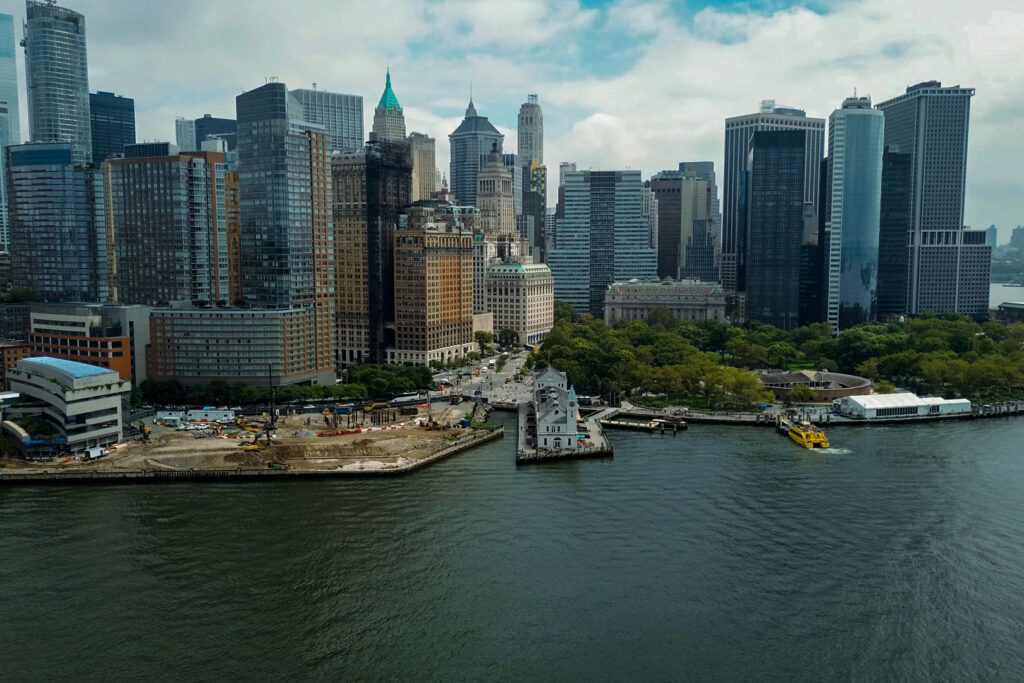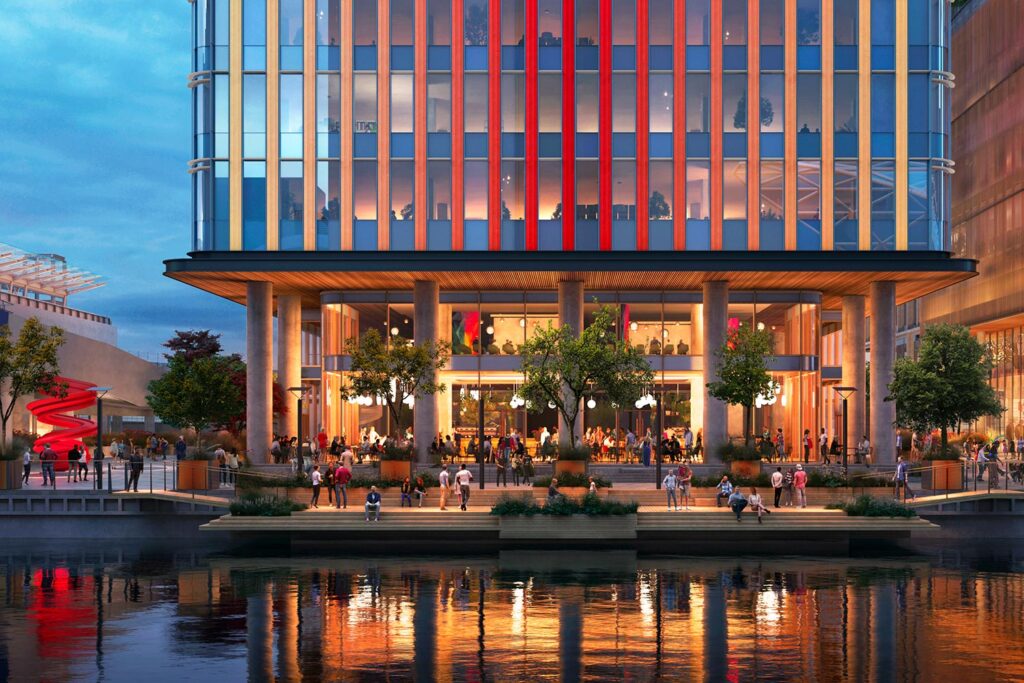Capturing the Value of Public Transit
Public transportation has historically been a driver of economic growth. However, current lack of sufficient funding to expand these systems limits future potential. Value capture provides a way to support transit projects with the very value that they generate.
Investment from federal, state, or local agencies is clearly needed to improve and expand the nation’s aging transit systems. However, public investment alone is usually not enough to meet the costs associated with large transportation projects.
Value Capture as a financing mechanism can be a crucial piece of the funding structure that leverages private sector money to make major transit projects a reality. It represents a suite of tools designed to provide an additional stream of revenue or financing options based on the expected or actual growth in private property values. These tools, some of which have been used for over a century, are now even more necessary to realize major transit projects.

Transit infrastructure wasn’t always a public endeavor. In the 19th and early 20th century, the private sector funded the construction of streetcars in many American cities as a way to bring people to the land they were developing. In this case, developers were able to subsidize a majority of construction costs through the increase in their property’s value. The essence of the value capture principle was clearly articulated in a New York Times article more than 85 years ago:
“To place the full burden of rapid transit service on the passenger does not seem just, in view of the collateral advantages which flow to neighboring property owners in the form of enhanced land values, and to business interests and the public at large….An equitable division of the cost of service between the passenger through his fare, the neighboring property owner through assessment, and the business man and citizen through general taxation should make feasible the expansion of rapid transit facilities.”
— New York Times, December 12, 1930

In recent years, as American cities have begun to place a higher priority on public transportation projects, value capture as a means to finance projects has become increasingly relevant. The first time in recent history a value capture mechanism was successfully used in New York City was for the construction of the Hudson Yards 7 train extension a few years ago. Value capture revenues were also used to pay for a portion of the construction of The Transbay Transit Center, a new transit center and bus storage facility in San Francisco. Chicago, Washington DC, Los Angeles, Seattle, Portland and Denver have also implemented this strategy in different ways to help fund varying scales of public transit improvements.
There are different value capture tools available to policy makers, each of which have varying implications on stakeholders, property owners, and local governments. The most commonly used ones are Special Assessments, Tax Increment Financing, and Joint Development.
Special Assessments
Special Assessments are the simplest form of value capture. Typically, a transit agency or local government will levy an additional tax on properties that are in proximity to large scale transit improvements—a Special Assessment District—with the expectation that these properties will receive some special advantage or betterment as a result of the improvements. These Districts can vary anywhere between a one-quarter of a mile to two or three miles away from the transit improvement, depending on existing density, property values, and political willingness. The additional revenue created by this measure is used to help repay the bonds issued or debt from loans taken out to fund the initial capital expenditure.
While the public sector is typically responsible for implementing Special Assessment Districts, there have been a few instances where the private sector has advocated for transit improvements by offering to pay additional taxes. For example, property owners in Virginia took advantage of a law allowing them to petition for the right to tax themselves to pay for transit. Approximately 64 percent of local property owners agreed to create a special assessment district that would levy an additional 22 cents for every $100 of assessed value on commercial and industrial properties near the proposed project. This additional source of revenue will provide $400 million for Phase I of the Silver Line, a $2.6 billion extension of the region’s Metrorail system.
Another example of using tax assessments to fund transit is London’s most recent transportation project, Crossrail, a 73-mile commuter rail line running through the heart of the city. In this case, no district was designated, but a “Business Rate Supplement” (BRS) tax of 2 percent was levied on all commercial properties within the boroughs of London with a pre-project valuation of over £55,000. This tax will be effective for a period of between 24 and 36 years and is expected to pay for £4 billion, or 26 percent, of the approximately £15 billion project cost. While Crossrail is viewed as a regional project that will provide a boost to businesses all across the city, properties closer to the new stations will inevitably accrue a larger share of benefits from the project. Further, the BRS does not apply to residential properties, many of which will realize an increase in value once the project is complete.
Tax Increment Financing
Tax Increment Financing (TIF) is similar to Special Assessments in that it relies on the expected increase in property tax revenue to fund transit improvements. It is common practice to establish a TIF district around the area of transit improvements to designate participating properties. The “base year” tax revenue (i.e. revenue prior to the transit project’s completion) from properties within the district is benchmarked, and then any additional property taxes collected above this benchmark will be diverted to a designated fund for debt service and repayment. Cities (or transit authorities) can issue bonds off those projected revenues, providing them with the upfront capital required to construct the transit project. TIF strategies do not actually change the tax rate levied on properties, making it more appealing to property owners.
While a Special Assessment provides a guaranteed source of income for the local authority, and creates less risk for bond issuers or infrastructure lenders, a TIF strategy relies on the assumption that property values will increase as a result of the project. While this creates more risk—if the expected increase fails to materialize, or falls short of estimated revenues, the authority will be responsible for the outstanding balance on the bonds—it also does not limit the potential revenue that could be collected.
In New York City, much of the capital for the $2.4 billion 7 train extension to Hudson Yards came from bonds sold to investors (a scheme initiated by the Bloomberg administration and the City Council). These bonds were partially backed by the expected property tax revenue increase in a designated TIF district around Hudson Yards. Additionally, this district was rezoned by the City to allow developers to pay bonuses—that would also support the repayment of bonds—in exchange for the right to build additional square footage beyond what was previously allowed. The projected revenue from these sources was initially estimated to be $283 million through 2012, but only generated $170 million due to the slower than anticipated pace of development, and so the City had to spend more than expected from its capital and operations budgets to help cover interest payments in the first few years of the project. Regardless, this project is a good example of a city taking the initiative to assemble a financing structure to pay for transit improvements without relying on funds from the local transit agency (MTA) or federal transportation grants (which are usually used for such projects).

Joint Development
As defined by the Federal Transit Administration, Joint Development “refers to the coordinated development of public transportation facilities with non-transit development, including commercial and residential development.” It is typical for the public sector to sell or lease its own land that is adjacent to transit facilities to the private sector to develop, and use the proceeds to pay for improvements or expansions of those facilities.
The light rail extension to the airport in Portland, Oregon was made possible through such a partnership between the public and private sectors. A private development company agreed to take responsibility for repayment of the bonds for approximately 1/4th ($28 million) of the total cost of the project, in exchange for the rights to develop a commercial hub on 120 acres of land owned by the Port of Portland adjacent to one of the new stations being constructed. The private sector had taken on a substantial risk by entering this agreement. The light rail opened in 2001, but due to the slow-down in the economy following 9/11, the development of the commercial hub stalled for a few years, which likely impacted the developer’s returns.
In Hong Kong, the Joint Development model is commonly used for construction of public transit extensions (and is largely attributed to the success of the transit agency’s self-sustaining business model). The Metropolitan Transit Railway Corporation (MTR) often purchases development rights from the city government, builds new transit infrastructure, and then finds private sector partners to develop mixed-use properties (through a public bidding process for master developers). A share of the profits from the new developments are passed on to the MTR, either through a profit sharing agreement or in a lump-sum amount. Through such value capture arrangements, the MTR is able to generate funds for new projects and sustain operations without support from government subsidies.
The Politics of Value Capture
Value Capture tools present an opportunity for public transit agencies across the country to access much needed financial resources to undertake major upgrades, but require the willingness of multiple stakeholders with different interests to agree upon a solution. This year, the NY state executive budget proposed designating transportation improvement districts that will divert a large portion of the subsequent property tax increments in the districts to the MTA (a state agency). MTA President Pat Foye noted that if the legislature does not approve this option, “there is no way the MTA can fund the next phase of the Second Avenue Subway or any other major new capital project.”
While a TIF structure has been used in New York City before with the construction of the 7 train extension, the current proposal (which, if passed, could be applied to multiple projects) presents numerous issues that need to be addressed. The districts would be for “the sole purpose of providing an additional stable and reliable dedicated funding source” for the MTA to “preserve, operate and improve existing transit and transportation services” in New York City. A controversial implication of this proposal is that any revenue generated by a particular capital project is not specifically tied to that capital project. Also, according to the proposal, these districts can cover an area up to one mile from the new capital project. The underlying assumption is that escalation in property values not immediately adjacent to the transit improvement can be attributed to the improvement itself is an unsubstantiated claim, especially in a relatively transit-rich city like New York. To wit, the proposed 116th Street Station on the Second Avenue Subway is a quarter-mile from the existing 116th Street Station on the Lexington line. The Mayor’s Office is against the proposal, viewing it as the Governor’s way of taking control of city taxes that could otherwise go toward improving public safety, education or housing.
The Future of Transit Funding
Public transportation is vital to the success of cities small and large. In an era of decreased federal support for local transit projects, value capture presents an alternate model for funding these necessary pieces of infrastructure. The range of value capture options available speaks to the variety of factors that must be considered for any transportation infrastructure project, and presents an opportunity for cities to adopt the features that best meet their unique needs. We believe that building awareness and a fundamental understanding of these tools is critical to maximizing their economic and social benefits.





